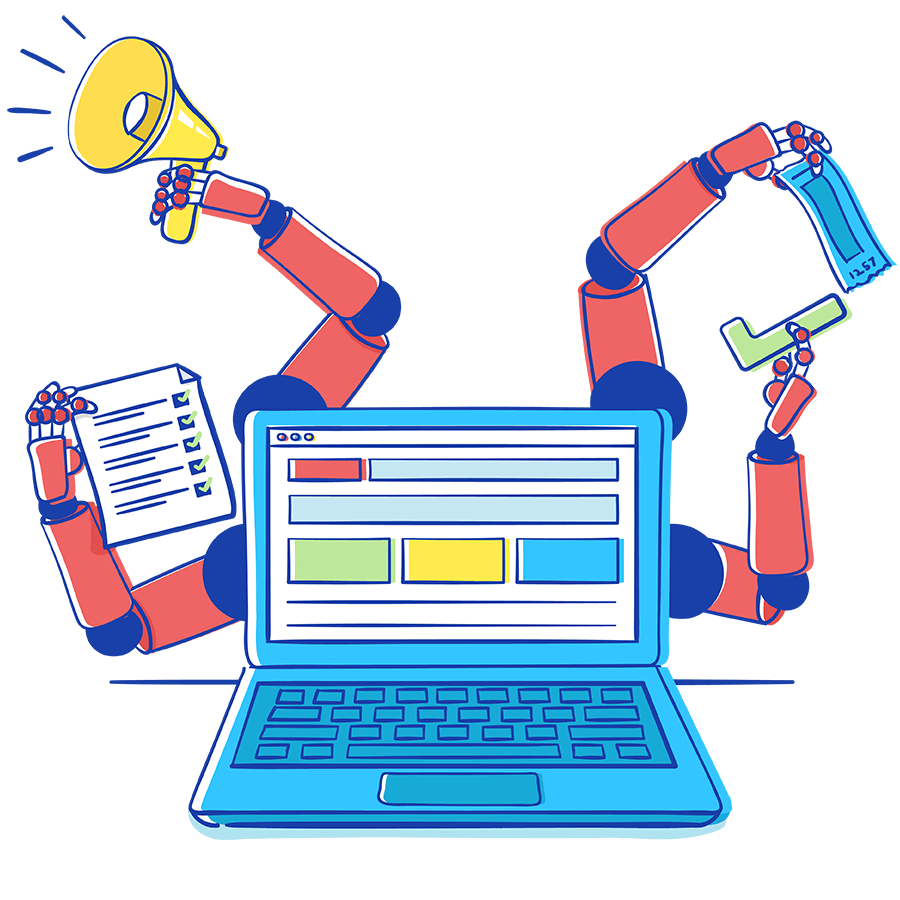In the rapidly evolving digital landscape, organizations are increasingly adopting HR automation to streamline administrative tasks, boost accuracy, and elevate the overall employee experience. Human Resource Automation (HR Automation) leverages advanced technology to handle repetitive and time-intensive HR processes, including recruitment, payroll, attendance tracking, benefits administration, and employee data management.
By automating these functions, HR departments can shift their focus from routine paperwork to more strategic and value-driven activities — like talent development, performance management, and organizational growth.
Understanding HR Automation
At its core, HR automation leverages digital tools and software solutions to streamline HR workflows, reduce manual effort, and ensure consistency in processes. These systems minimize human intervention in administrative functions, improving efficiency and reducing the chances of errors.
Modern HR automation solutions are typically cloud-based and integrated with Artificial Intelligence (AI) and Machine Learning (ML), enabling HR professionals to make data-driven decisions, personalize employee experiences, and enhance operational transparency.

Why HR Automation Matters
On average, HR professionals spend nearly 40% of their time on repetitive administrative activities such as form filling, employee data updates, and attendance management. These manual tasks not only consume valuable time but also divert HR’s focus from strategic initiatives like employee engagement and retention.
By implementing HR process automation, organizations can:
- Reduce manual workload and improve productivity.
- Accelerate onboarding and performance review processes.
- Provide employees with faster and more transparent HR services.
- Ensure compliance with legal and organizational policies through automated monitoring systems.
Ultimately, HR automation empowers HR teams to focus on what matters most — people. It helps foster a culture of collaboration and engagement by freeing HR professionals from the burden of routine paperwork.
Key Benefits of HR Automation
Adopting HR automation delivers numerous benefits that directly enhance organizational efficiency and employee satisfaction. Let’s explore the major advantages:
- Improved Efficiency and Accuracy
Automation eliminates the need for manual data entry and repetitive tasks. By digitizing document-driven processes such as payroll, leave requests, and attendance, HR teams can complete their work faster and with greater accuracy. The result is a more efficient and error-free HR operation.
- Enhanced Focus on People and Culture
When HR professionals spend less time on administrative tasks, they can redirect their efforts toward employee engagement, culture building, and well-being initiatives. This shift allows HR to become a true strategic partner in organizational growth rather than just an administrative function.
- Data-Driven Decision Making
HR automation provides actionable insights by collecting and analyzing employee data. With automated systems, managers can track performance trends, identify skill gaps, and make informed decisions based on real-time analytics. This improves transparency and accountability across all levels of the organization.
- Reduced Human Error
Manual HR tasks are prone to mistakes that can lead to compliance issues, inaccurate payrolls, or miscommunication. HR automation ensures that processes are standardized and consistent, minimizing the potential for human error and increasing reliability.
- Streamlined Communication and Collaboration
With automated HR systems, all stakeholders — from managers to employees — can easily access relevant information, forms, and updates. This improves internal communication, enhances collaboration, and ensures that everyone understands their roles and responsibilities within HR processes.
- Cost and Space Efficiency
By digitizing HR records and storing them securely in cloud-based systems, companies can drastically reduce the need for physical filing cabinets and storage space. This not only saves costs but also makes retrieving records faster and easier — all at the click of a button.
- Better Onboarding Experience
Automation simplifies the onboarding process for new hires. Digital onboarding portals guide employees through paperwork, training modules, and policy acknowledgments efficiently. This makes new employees feel welcomed and supported while giving HR more time to build meaningful relationships with them.
How HR Automation Is Shaping the Future of Work
The future of HR is undeniably technology-driven. As organizations embrace digital transformation, HR automation is becoming a critical component of business strategy. From AI-powered resume screening tools to automated learning management systems and employee self-service portals, automation is redefining how HR teams operate.
Emerging HR Automation Trends:
- AI in Recruitment: Automated candidate screening and predictive analytics help identify the best fit for roles.
- Chatbots and Virtual Assistants: Provide instant responses to employee queries, improving HR service delivery.
- Cloud-Based HR Management Systems: Enable real-time access to employee information from anywhere.
- Automated Compliance Tracking: Ensures organizations meet legal and policy standards effortlessly.
As these technologies evolve, HR departments can achieve a higher level of operational excellence while enhancing the overall employee experience.
Conclusion
HR automation is not just about replacing manual work with technology — it’s about transforming the way HR adds value to an organization. By automating repetitive tasks, HR teams can focus on strategic goals like talent retention, workforce planning, and employee engagement.
Organizations that embrace HR automation enjoy faster operations, fewer errors, and better decision-making capabilities. Most importantly, it allows HR professionals to do what they do best — connect with people, nurture talent, and drive company culture forward.
In short, HR automation is the bridge between administrative efficiency and human-centered leadership a vital step toward building smarter, more agile, and future-ready organizations.







